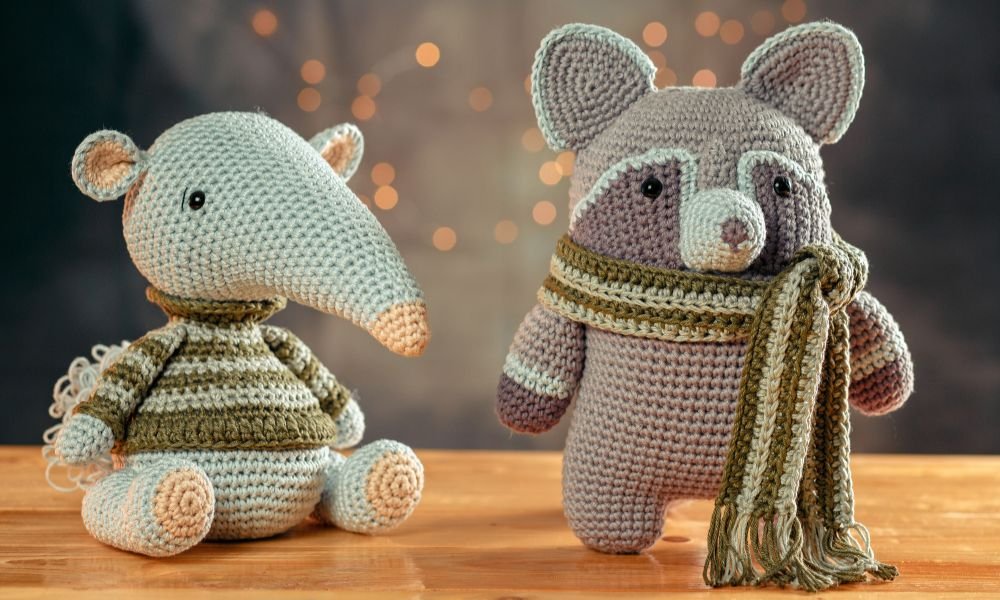The Art of Amigurumi: An Intersection of Culture, Mathematics, and Commerce
Amigurumi, the Japanese craft of crocheting small, stuffed yarn creatures, has transcended its origins to become a global phenomenon. Far more than a simple hobby, it represents a complex interplay of cultural history, applied mathematics, and a vibrant digital-age economy. The term, a portmanteau of the Japanese words ami (crocheted or knitted) and nuigurumi (stuffed doll), describes an art form that is both technically precise and emotionally resonant. [1][2] An in-depth examination reveals how this craft evolved from a post-war comfort into a sophisticated art form, how its creation relies on geometric principles, and how it thrives as a model for the modern artisan in a connected world.
Cultural Provenance and the Kawaii Nexus
While knitting was introduced to Japan as early as the Edo period (1603-1868), where it was adopted by samurai for practical items like socks and adornments, the modern identity of amigurumi is inextricably linked to the cultural landscape of post-World War II Japan. [3][4] In a nation recovering from devastation, a collective desire for comfort and cheerfulness emerged, finding expression in kawaii (cute) culture, which began to flourish in the 1970s. [3][5] This aesthetic, celebrating innocence, charm, and childlike qualities, provided the perfect cultural incubator for amigurumi. [6] The craft became a tangible expression of kawaii, offering a form of gentle escapism and emotional comfort. [7] This was further amplified in the 1980s by television programs like NHK’s “Ami,” which popularized the hobby across the nation. [4][8] Psychologically, the appeal of kawaii is rooted in its ability to trigger nurturing instincts and positive emotional responses, which can reduce stress and improve focus. [9][10] The classic amigurumi design, often featuring oversized heads and simple expressions, taps directly into these evolutionary responses, making each creation an object of affection and a token of good luck. [3][11]
The Geometric and Material Science of Form
At its core, the creation of amigurumi is an exercise in applied mathematics and material science. The art form relies on the ability to transform a one-dimensional line of yarn into a three-dimensional object through the precise application of geometric principles. [12][13] The foundational technique, the “magic ring,” creates a perfectly closed, adjustable starting point, essential for the seamless, spherical shapes characteristic of the craft. [4] From this point, the form is dictated by the mathematical rate of increases and decreases. The standard formula for a flat circle involves increasing by six stitches per round, creating a hexagon. [14] Deviations from this formula allow for sculptural shaping; increasing by eight stitches creates a flatter circle, while increasing by four creates a cone. [15] This principle allows designers to mathematically engineer complex curves and shapes, from a perfectly round head (multiples of 6) to a pointed snout (multiples of 4). [15][16] The choice of yarn fiber is equally critical. Plant-based fibers like cotton are prized for their strength and stitch definition, as their inelasticity creates a firm, durable fabric that holds its shape well. [17][18] In contrast, animal fibers like wool offer elasticity and warmth, while synthetic fibers such as acrylic provide affordability and a vast color palette, making them forgiving for beginners. [19][20] The very structure of crocheted fabric, with its series of pseudo-knots, creates a dense and less stretchy material compared to knitting, which is ideal for holding stuffing without distortion. [21]
The Digital Artisan Economy and Intellectual Property
The global proliferation of amigurumi from a Japanese tradition into a worldwide craft movement was catalyzed by the internet in the early 2000s. [1][3] Digital platforms like Etsy, Ravelry, and social media channels have created a thriving ecosystem for a new generation of artisans. [22] These platforms empower individual designers to build global brands, market their creations, and sell patterns directly to a worldwide audience, bypassing traditional gatekeepers. [23][24] This has fostered a robust creator economy where success depends on a blend of artistic originality, marketing savvy, and community engagement. [25] However, this digital marketplace has also brought to the forefront complex issues of intellectual property. Under copyright law, the written pattern—the specific expression of instructions—is protected the moment it is created. [26][27] This means a designer’s pattern cannot be legally copied, redistributed, or made into a video tutorial without explicit permission. [28] The idea itself, such as a crocheted octopus, is not copyrightable, but the unique pattern to create it is. [26] A contentious gray area exists regarding the sale of finished items made from another designer’s pattern. While some designers grant permission, often requesting credit, others restrict commercial use. [29] Navigating these legal and ethical standards is a crucial aspect of participating in the modern craft economy, where willful infringement can lead to significant financial penalties and reputational damage. [26]



